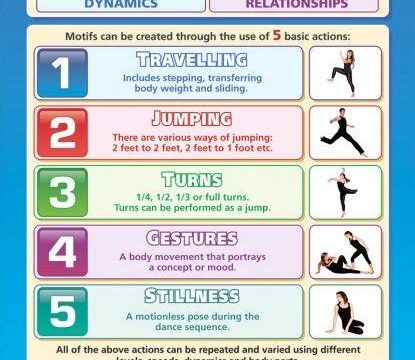Introduction to Dance Workshop
Are you interested in learning how to dance? Do you want to explore different dance styles and techniques? If so, attending a dance workshop is a great way to get started. In this blog post, we will provide you with an introduction to dance workshops and what you can expect from them.
What is a Dance Workshop?
A dance workshop is a structured program that offers participants the opportunity to learn and improve their dance skills. It is usually led by professional dancers or instructors who have expertise in a specific dance style. Dance workshops are designed for dancers of all levels, from beginners to advanced, and they provide a supportive and inclusive environment for participants to grow and learn.
During a dance workshop, you will engage in various activities that may include warm-up exercises, learning choreography, exploring different dance styles, and incorporating music and rhythm in your movements. These workshops typically span over a few hours or even a whole day, allowing participants to immerse themselves fully in the dance experience.
Benefits of Attending a Dance Workshop
Attending a dance workshop offers numerous benefits for dancers of all levels. Firstly, it provides an opportunity to learn from experienced dancers and instructors who can provide valuable guidance and feedback. This feedback is essential for your growth and improvement as a dancer.
Secondly, dance workshops allow you to explore different dance styles and techniques. Whether you are interested in ballet, jazz, hip-hop, or contemporary dance, there is a workshop out there for you. This exposure to different dance styles can broaden your dance vocabulary and help you develop your unique style.
Lastly, dance workshops are a great way to meet other dancers who share your passion. It allows you to connect with like-minded individuals, exchange ideas, and create lasting friendships within the dance community.
Conclusion
In conclusion, attending a dance workshop is an excellent way to kickstart your dance journey or enhance your existing skills. You will be immersed in a supportive and inclusive environment where you can learn from experienced dancers, explore different dance styles, and connect with fellow dancers. So what are you waiting for? Sign up for a dance workshop today and unleash your inner dancer!
Overview of Dance Workshop Components
The dance workshop is a comprehensive program that offers participants the opportunity to learn and explore various aspects of dance. It is designed to provide a holistic approach to dance education, incorporating elements such as technique, choreography, music, rhythm, and feedback. In this blog post, we will give an overview of the different components of a dance workshop and how they contribute to a well-rounded dance learning experience.
One of the key components of a dance workshop is technique training. This involves learning and mastering the fundamental movements and skills specific to different dance styles. Technique training focuses on developing strength, flexibility, coordination, and control. It provides a solid foundation for dancers to build upon and enhance their performance abilities.
Choreography is another important component of a dance workshop. This involves learning and creating dance routines or sequences. Participants are taught different choreographic techniques, such as use of space, timing, and dynamics. They have the opportunity to explore their creativity and express themselves through movement. Choreography allows dancers to tell a story or convey emotions through their performances.
The music and rhythm component of a dance workshop adds depth and enhances the overall dance experience. Participants learn to understand and interpret different styles of music that accompany various dance genres. They develop an understanding of musicality and how it connects to movement. Rhythm training helps dancers to improve their timing, synchronization, and coordination, allowing them to fully connect with the music and express themselves through their dancing.
In any learning experience, feedback and improvement play a crucial role. In a dance workshop, participants receive ongoing feedback from instructors and peers. This feedback helps them to identify areas for improvement and provides guidance for their progress. Feedback can take the form of constructive criticism, positive reinforcement, or technical corrections. It is an essential component as it assists dancers in refining their technique, expanding their skills, and growing as performers.
In conclusion, the components of a dance workshop work together to create a holistic dance learning experience. Technique training, choreography, music and rhythm, and feedback and improvement are all integral parts of this educational journey. By participating in a dance workshop, individuals have the opportunity to develop their skills, express their creativity, and become well-rounded dancers.
Exploring Different Dance Styles
When it comes to the world of dance, there is a wide variety of styles that dancers can explore. Each dance style has its own unique characteristics, techniques, and costumes that make it distinct from others. From classical ballet to hip-hop, salsa to contemporary, there is something for everyone to enjoy and appreciate. In this blog post, we will be exploring different dance styles and delving into the richness and diversity that the world of dance has to offer.
Dance styles can be categorized into various genres such as classical, folk, modern, and cultural dances. One popular dance style that is widely known and admired is ballet. Ballet is a highly technical dance form that originated in the courts of Italy and France in the 15th century. Known for its grace, elegance, and precision, ballet requires years of training and discipline.
Another dance style that has gained immense popularity in recent years is hip-hop. Originating in the African-American communities of the United States, hip-hop dance encompasses a wide range of styles including popping, locking, and breaking. It is characterized by its high-energy movements, intricate footwork, and improvisation.
Understand the Importance of Warm-up Exercises
Warm-up exercises are an essential part of any dance workshop. They serve as a way to prepare the body for the physical demands of dancing and help prevent injuries. It is important for dancers to understand the significance of warming up before diving into intense dance routines.
One of the main benefits of warm-up exercises is that they increase blood flow to the muscles, which helps to loosen them up and improve flexibility. This is crucial for dancers as it allows them to achieve a greater range of motion and perform dance moves with ease. Additionally, warm-up exercises help to increase body temperature, which further loosens the muscles and reduces the risk of strains or pulls.
In addition to the physical benefits, warm-up exercises also have a positive impact on mental preparation. They provide a valuable opportunity for dancers to mentally focus and prepare for the dance workshop ahead. By incorporating breathing exercises and gentle movements, dancers can calm their minds, center their thoughts, and channel their energy towards the upcoming dance routines. This mental preparation plays a vital role in enhancing performance and preventing any potential distractions or anxieties.
When it comes to warm-up exercises, there are several options to choose from. Some popular choices include jogging in place, stretching different muscle groups, and performing gentle cardio movements. It is important for dancers to choose warm-up exercises that target the specific muscles and joints used in dance. This will ensure that they are properly prepared for the movements and reduce the risk of injuries.
Overall, understanding the importance of warm-up exercises is crucial for dancers participating in a dance workshop. These exercises not only prepare the body physically but also mentally for the demands of dancing. By incorporating warm-up exercises into their routine, dancers can improve flexibility, prevent injuries, and enhance their overall performance.
Learning Choreography and Dance Techniques
Learning choreography and mastering dance techniques are essential aspects of becoming a skilled dancer. Whether you’re a beginner or an experienced dancer, the process of learning and perfecting choreography can be both exciting and challenging. In this blog post, we will explore the importance of choreography and dance techniques in enhancing your dance skills and performance.
Choreography is the art of creating and arranging dance movements in a structured and meaningful way. It involves a combination of creativity, musicality, and technical skills. By learning choreography, dancers not only improve their ability to remember and perform complex sequences but also develop their artistic expression and storytelling capabilities. Good choreography can bring a dance piece to life, capturing the audience’s attention and evoking emotions. It requires precision, coordination, and a deep understanding of rhythm and musicality.
On the other hand, dance techniques refer to the specific movements, positions, and principles that govern different styles of dance. Just like any other art form, dance has its own set of techniques that serve as the foundation for executing movements correctly and safely. Learning dance techniques involves working on body alignment, posture, balance, and flexibility. It also includes mastering basic steps, turns, jumps, and other movements that are characteristic of a particular dance style.
While learning choreography and dance techniques, it is important to have a structured and systematic approach. This often involves breaking down the choreography into smaller sections or phrases, practicing them individually, and then gradually piecing them together. Repetition is key in learning and memorizing choreography, as it helps build muscle memory and familiarity with the movements.
Listed below are some helpful tips for learning choreography and dance techniques:
- Take notes: Write down the sequence of movements, counts, and any important cues or instructions given by the choreographer. Having a visual reference can help you remember the choreography more effectively.
- Use video recordings: Record yourself or the choreographer demonstrating the choreography. By watching the recordings, you can review and practice the movements at your own pace.
- Break it down: If the choreography is particularly challenging, break it down into smaller sections and focus on mastering each section before moving on to the next.
- Seek feedback: Request feedback from your dance instructor or peers. They can provide valuable insights and suggestions for improvement.
By dedicating time and effort to learning choreography and dance techniques, you can enhance your dance skills, expand your artistic repertoire, and take your performances to the next level. Remember, practice makes perfect, so keep practicing, exploring different dance styles, and pushing your boundaries as a dancer.
Incorporating Music and Rhythm in Dance
The incorporation of music and rhythm is an essential aspect of dance. Music serves as the driving force behind the movements, and rhythm provides the structure for the choreography. It adds depth, emotion, and energy to a dance performance, making it more captivating and engaging for both the dancers and the audience.
Incorporating music in dance allows dancers to connect with the emotions and mood of the music, enhancing their performance and expressions. The rhythm of the music sets the pace and timing, enabling dancers to synchronize their movements and create a cohesive and visually appealing piece.
Furthermore, music provides an artistic element to dance. Different genres of music can influence the style, technique, and overall feel of a dance piece. For example, classical music may evoke elegance and grace, while hip-hop music may inspire powerful and dynamic movements.
- Enhancing Emotional Connection: The right music can enhance the emotional connection between the dancers and the audience. It allows dancers to convey their feelings and emotions through their movements, creating a more impactful and memorable performance.
- Setting the Mood: Music sets the mood and atmosphere of a dance performance. It can transport the audience to different time periods, cultures, or emotional states. The selection of music can make or break the overall impact of a dance piece.
- Creating Dynamics and Contrast: The use of different tempos, rhythms, and musical dynamics can create contrast and add depth to a dance piece. It allows dancers to explore different movement qualities and intensify the visual impact of their performance.
| Music | Rhythm | Dance |
|---|---|---|
| Provides emotional connection | Sets the pace and timing | Expresses emotions through movement |
| Sets the mood and atmosphere | Enhances synchronization | Creates dynamics and contrast |
| Adds artistic element | Defines movement structure | Engages and captivates audience |
The Role of Feedback and Improvement in Dance Workshops
Dance workshops provide a valuable opportunity for dancers to learn, grow, and improve their skills. One of the key elements that contributes to this growth is feedback. Through receiving feedback, dancers can gain insight into their strengths and weaknesses, which helps them identify areas for improvement. Furthermore, feedback also plays a crucial role in fostering a sense of community and collaboration within the dance workshop setting.
Feedback in dance workshops can take various forms. At times, it can be provided by instructors or choreographers who observe and assess the dancers’ performance. These professionals offer constructive criticism, highlighting areas that need improvement and suggesting techniques or strategies to enhance the dancers’ skills. Additionally, feedback can also come from fellow dancers, who may provide insights and observations based on their own experiences and perspectives. This peer-to-peer feedback allows dancers to learn from one another and develop a deeper understanding of their own abilities.
Feedback serves as a catalyst for improvement in dance workshops. By receiving feedback, dancers can gain a clearer understanding of their strengths and weaknesses. This awareness helps them focus their efforts on specific areas that need improvement, whether it be refining technique, enhancing stage presence, or mastering complex choreography. Moreover, feedback encourages dancers to set goals and work towards achieving them, fueling their motivation and commitment to continuous growth and development.
- Constructive criticism: Instructors and choreographers provide feedback to dancers, highlighting areas that need improvement.
- Peer-to-peer feedback: Dancers learn from one another and gain insights based on their own experiences.
- Self-awareness: Feedback helps dancers understand their strengths and weaknesses, allowing them to focus their efforts on specific areas of improvement.
- Goal setting: Feedback encourages dancers to set goals and work towards achieving them, fostering motivation and commitment.
Overall, feedback plays a vital role in dance workshops by nurturing growth, fostering improvement, and creating a collaborative learning environment. It provides dancers with valuable insights that help them identify areas for development and enhance their overall performance. Whether it comes from instructors, peers, or self-reflection, feedback empowers dancers to continually push their boundaries, explore new possibilities, and become the best dancers they can be.
Frequently Asked Questions
1. What are the different components of a Dance Workshop?
A Dance Workshop typically includes warm-up exercises, learning choreography and dance techniques, exploring different dance styles, incorporating music and rhythm, and receiving feedback and making improvements.
2. Why is it important to explore different dance styles in a workshop?
Exploring different dance styles helps dancers broaden their knowledge and skills, enhances their creativity, and allows them to discover new ways of expressing themselves through movement.
3. How do warm-up exercises contribute to a successful dance workshop?
Warm-up exercises are essential in a dance workshop as they help prevent injuries, increase flexibility and range of motion, improve stamina and coordination, and prepare the body and mind for more intense physical activity.
4. What is the significance of learning choreography and dance techniques in a workshop?
Learning choreography and dance techniques enables dancers to refine their skills, expand their repertoire of movements, enhance their performance quality, and develop a deeper understanding of the art form.
5. How does incorporating music and rhythm enhance the dance experience in a workshop?
Incorporating music and rhythm in a dance workshop adds an extra dimension to the movement, creating a symbiotic relationship between music and dance. It helps dancers connect with the emotions and energy of the music, elevates the overall performance, and enhances the audience’s experience.
6. What is the role of feedback and improvement in a dance workshop?
Feedback plays a crucial role in a dance workshop as it provides dancers with valuable insights, identifies areas for improvement, offers constructive criticism, and encourages growth. It helps dancers refine their technique, enhance their artistic expression, and become more confident performers.
7. How can a dance workshop help dancers improve their skills?
A dance workshop provides a supportive and enriching environment for dancers to focus on their craft, learn from experienced instructors, collaborate with fellow dancers, and receive personalized feedback. This concentrated practice and exposure to new techniques and styles contribute to significant skill improvement over time.





